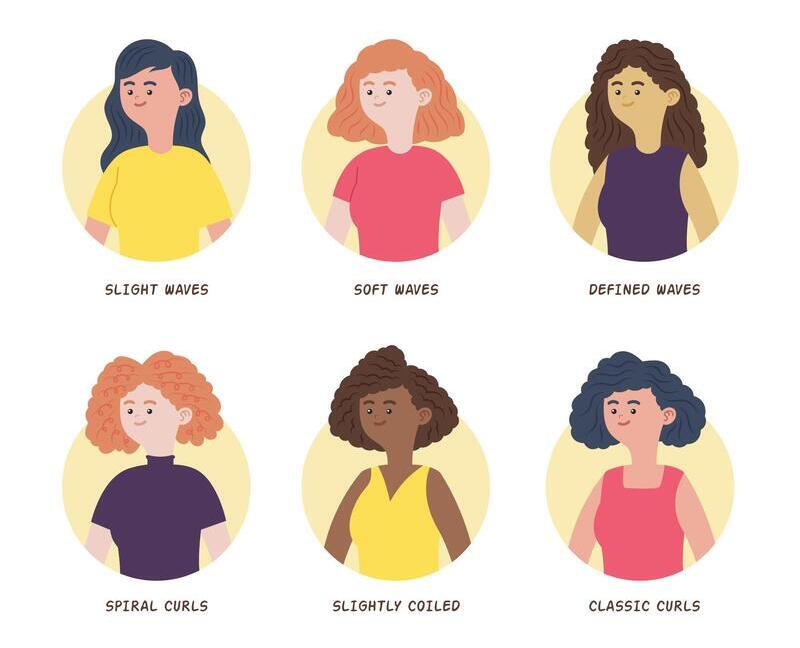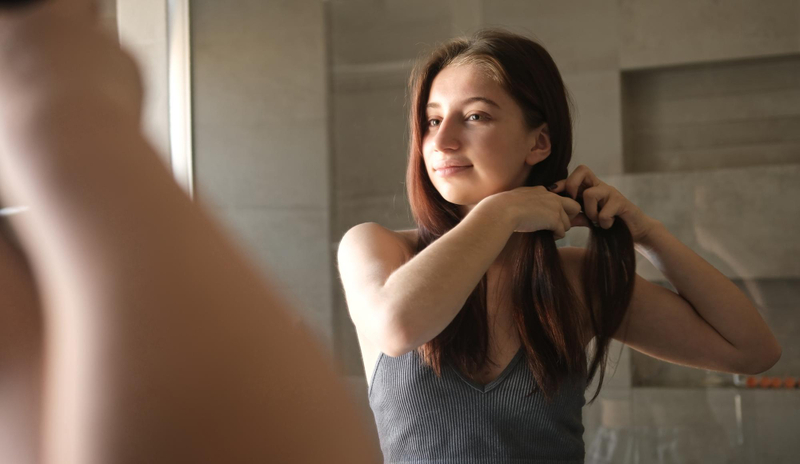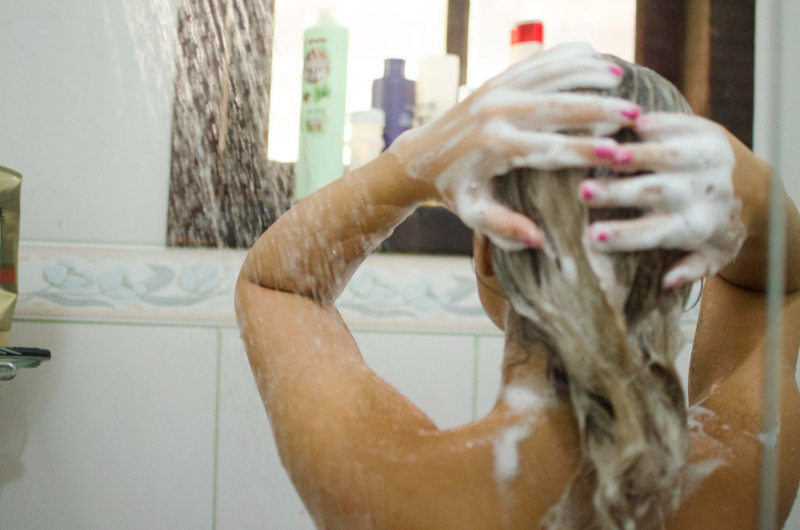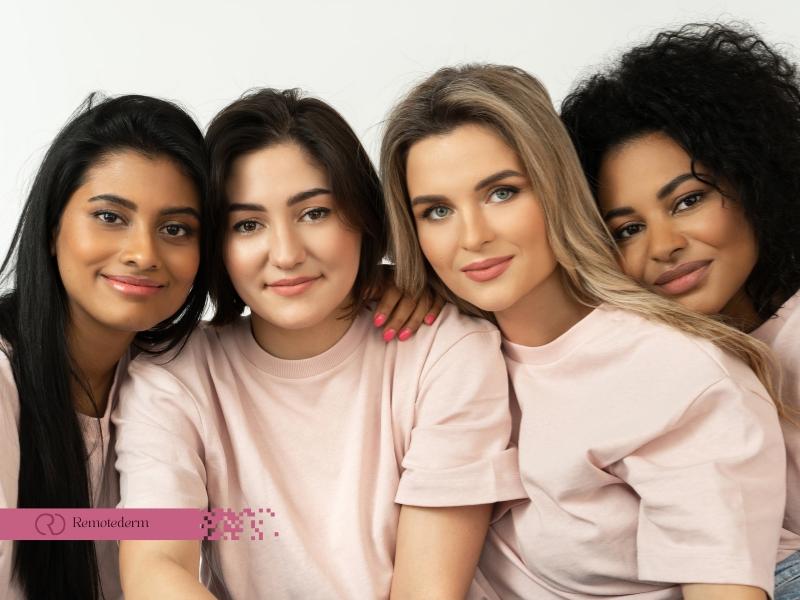This guide provides information on different types of hair and selecting appropriate products and treatments for healthy hair, ensuring proper care for curly, straight, blonde, or dark hair, and helps maintain hair health in Canada and other countries.
Hair Categories: What Type of Hair Do I Have?
Hair categories can usually be classified by the texture, the structure, and the color. However, how to know what type of hair you have? A brief overview of the different types of hair to guide you in determining your own.
1. Hair Texture Types
Hair texture is often classified into three main types:
- Straight Hair: This hair type looks slick and shiny and there are no dull curls. On the other hand, the hair is more easily greased since the natural oils can move along the shaft of the hair to the tip.
- Wavy Hair: Wavy hair can be classified as a bridge between straight and curly; it is somewhere in between. This is the way of saying that it can be a loose, waving pattern, lying around to a well-defined S-shaped wave.
- Curly Hair: Different types of curly hair that are well-defined by the actual spiral shape bring out the characteristic of curly hair. They are more likely to frizz and dry out.

2. Hair Structure Types
Hair structure is concerned with the measure of the amplitude of the hair strand and is commonly divided into:
- Fine Hair: Divided and oversensitive for the easy weight plus almost fragility.
- Medium Hair: A thicker and more airy hair that still manages to stay in shape without resembling fruit.
- Coarse Hair: The hair is very thick, strong and damage-resistant but is more difficult to handle.
3. Hair Color Types
Another one of the major aspects that is to be considered when classifying hairs is the color of a hair. Although there are so many shades and hues, still some of the commonly known hair colors are:
- Blonde: The platinum level is the highest while dark blonde is the lowest one, regardless of any of the types of blonde hair, care should be taken to avoid brassiness.
- Brunette: A typical hair color that has the shades from light brown to dark chocolate is the common hair color.
- Red: The rarest natural color is, therefore, the one that requires special products to preserve the color.
- Black: Arguably the most monochrome and smoothest color, it generally requires hair to be well-moisturized to reduce dryness.
How to Know What Type of Hair You Have

The hair type you have helps you choose the right products and your hair care routine. Follow this step by step guide to figure out what type of hair you have:
1. Observe Your Hair’s Texture
Wash your hair and let it air dry without applying any hair products and then have a look at how your hair dries naturally to recognize its texture.
- In case you notice your hair drying out straight without bends or waves, the hair is straight.
- However, a slight wave in the hair reveals you have wavy hair.
- If your hair is forming curls or spirals then your hair type is curly hair.
2. Assess Your Hair’s Thickness
Take a single strand of hair and place it between your fingers:
- In case you can hardly feel it, very fine hair is what you have.
- When you note that it is rigidly felt, you have a medium type.
- Then if it is thick coarse, you are the owner of fine-textured hair.
3. Consider Regional Differences
In the Canadian environment consisting of cold and dry weather, your hair type can be affected in a way that makes it more susceptible to traits such as baby hair and dry hair in men during winter.
Hair Care Tips for Different Hair Types
At this point after you’ve figured out what type of hair you have. The next step will be to concentrate on care. Here’s how to take care of different types of hair:
- If you have straight hair, use shampoo frequently, pick a light conditioner to eliminate the roughness, and protect your hair from heat by using hair care products before styling.
- If you have wavy hair, opt for a moisturizing shampoo, use a leave-in conditioner for definition, and refrain from using heavy products.
- If you have a curly hair type, then you need to apply shampoo without sulfate, deep condition your hair every week, and curl cream will work to prevent frizz.
- However, for blonde hair, use purple shampoo to counteract brassy colors, apply UV protectant to prevent the color of your hair from fading, and treat your hair with moisture masks.

Common Hair Concerns and Solutions
Having knowledge of your hair type also involves knowing the common type of problems to:
- In the case of hair loss, which can lead to deterioration of all types of hair and require medical consultation in case it is lingering for a long time, an online hair loss dermatologist consultation in Canada offers a quick and accurate diagnosis.
- For men who have dry hair, the hair product that hydrates them should be used, minimize washing, and oils or serums should be added to the hair to maintain hydration.
- For dealing with baby hair, you can smooth it down with a light gel or pomade and style it in a way that does not cause breakage.
Final Thoughts
Your hair type is the starting point for the correct maintenance of your hair. Be it curly or straight or dyed blonde, the right care will keep your hair healthy and beautiful. In Canada, keep in mind the environment’s influence and opt for the products that will suit your hair’s specific needs the most.
FAQs
1. How do I prevent hair breakage?
Use gentle shampoo, limit heat styling, and trim split ends regularly.
2. How can I achieve my hair color longer?
Use color-safe shampoo, avoid prolonged sun exposure, and wash with cool water.
3. What is the way of treating frizzy hair?
Leave-in conditioners, hot water, and anti-frizz serum application are some solutions.
4. Can hair type change with age?
Yes, hair type can change due to hormone fluctuations, aging, and environmental factors.
